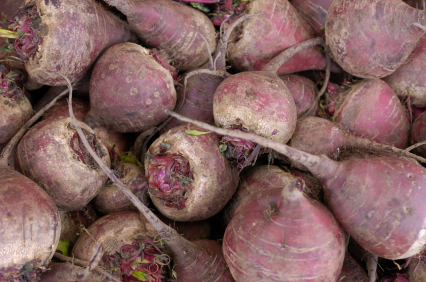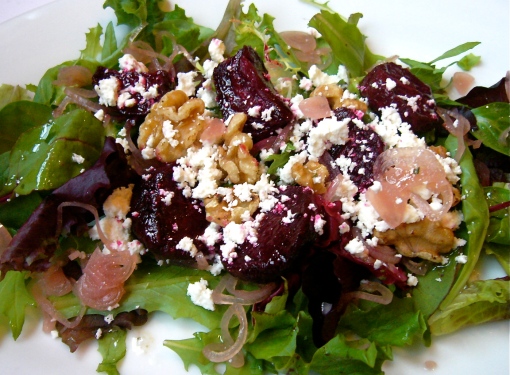I recently returned from a trip to northern Italy and have been busy working on my own versions of some of the dishes I enjoyed there. One of those dishes was a smoky risotto with sautéed radicchio that I had one day for lunch. It was a cool, rainy day and the hearty richness of the risotto paired with a glass of Piedmontese wine was the perfect way to warm up.
Sourcing Ingredients
Scamorza is a cheese that is similar to provolone or mozzarella. The smoked version (affumicate) is darker in colour and has a firm smoky rind and soft interior. Scamorza affumicate can be found at many cheese shops but you can substitute smoked mozzarella or smoked provolone if you can’t find it. The scamorza rind is edible but won’t melt as easily so it can be trimmed if desired.
Radicchio is a leafy vegetable that is related to chicory. Raw radicchio can be quite bitter but it mellows when sautéed or grilled. It can usually be found near the lettuce or cabbage in supermarkets and is easily recognizable by its bright purple leaves.
If it is your first time making risotto, you might find this primer helpful for information about ingredients: Basic Risotto.
Radicchio and Scamorza Risotto
Makes about 4 servings as a starter
(VEGETARIAN)
- 2 Tablespoons extra virgin olive oil
- 1 small onion, finely diced
- 2 cups chopped radicchio (about 1 small head), plus extra for garnish and to make radicchio ‘cups’ (optional, see below)
- 1 cup raw carnaroli rice (you can use arborio if carnaroli isn’t available)
- 1/2 cup dry white wine
- About 3-1/2 to 4* cups chicken or vegetable stock – be sure to use vegetable stock if cooking for vegetarians
- 4 oz. (113 grams) smoked scamorza cheese, cut into 1/2″ cubes (equals about 3/4 cup of cubed cheese)
- 1 Tablespoon unsalted butter
- Salt, to taste
- In a large deep skillet or enameled cast iron pot, heat olive oil on medium-high heat. Add onion and cook until it’s beginning to soften, about two minutes. Add the radicchio and sauté for another two minutes, stirring occasionally.
- Add rice and sauté for another 2 minutes, stirring periodically. Pour in the wine and stir the rice. Reduce heat and let simmer gently until the wine is completely absorbed, about 3 minutes.
- Once the wine has completely absorbed, add 1/2 cup of the stock. Let the rice simmer gently, stirring occasionally. Once the stock has almost fully absorbed (about 4 minutes), add another 1/2 cup of the stock.
- Repeat the process of adding the stock a half-cup at a time once it has almost absorbed. Continue until the rice is creamy and cooked through but still has a very slight ‘bite’ in the middle of the grains (al dente). Stir the rice on occasion and keep an eye on it. It will take approximately 6 to 7* additions of stock in half-cup increments (*Note: the rice may require a little more or less stock, depending on how absorbent it is).
- Once the rice is cooked to the desired tenderness, remove the pan from the heat and add the butter and cheese. Stir into the risotto until completely melted. Season with salt to taste.
- To serve: If you want to make radicchio ‘cups’, trim off the root end of a fresh head of radicchio. Carefully peel back the whole leafs, making sure not to tear them. Arrange three or four leaves on a plate in a circle to make a cup shape. Fill with risotto and garnish with a small amount of fresh chopped radicchio.
Bon Appétit and Enjoy!
Get updates from The Seasonal Gourmet on Facebook and Twitter. Join the conversation today!
Copyright Trish Coleman. Please contact the author to obtain permission for republication.











